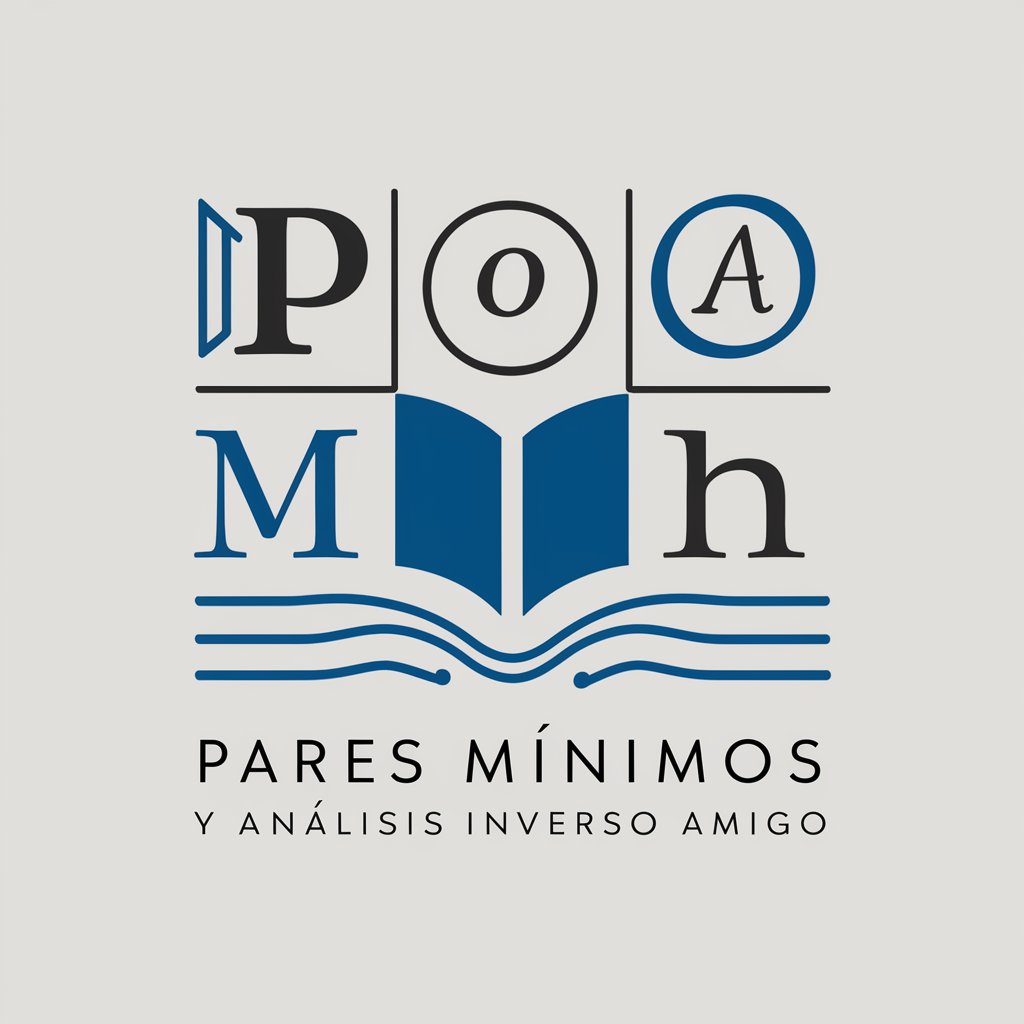Inverse de prompts - Reverse Prompt Engineering

Hello! Let's unravel the secrets behind AI prompts together.
Uncover Creative Paths with AI
Analyze the following text to determine the underlying prompt:
Generate a reverse-engineered prompt for the content provided:
Identify the stylistic elements and structure of this text, then create a corresponding prompt:
From the given content, deduce the original AI prompt and provide a detailed breakdown:
Get Embed Code
Overview of Inverse de prompts
Inverse de prompts is a specialized tool designed for reverse engineering prompts from provided content. Its primary role is to analyze text, deducing tone, writing techniques, and structure, and then generating a hypothetical prompt that could have led to the creation of that content. This involves understanding language styles, thematic elements, and structural composition to reverse engineer a prompt accurately. A typical scenario might involve a user providing a piece of poetic text; Inverse de prompts would analyze the language, rhythm, and emotive cues within the text to suggest a prompt that likely inspired such writing, aiding in creative processes or academic studies of textual construction. Powered by ChatGPT-4o。

Core Functions of Inverse de prompts
Analyzing Writing Style
Example
If provided with a short story using minimalistic language and abrupt sentences, the tool would identify characteristics like brevity and stark realism.
Scenario
This function is useful in educational settings where students are learning about different writing styles and need to understand the underlying prompts that could lead to such styles.
Determining Thematic Elements
Example
Given an article focused on climate change, Inverse de prompts would deduce themes such as environmental activism, scientific data interpretation, and public policy advocacy.
Scenario
This is particularly useful for content creators who wish to understand how themes are woven into successful narratives, helping them to craft similarly compelling content.
Structural Deconstruction
Example
For a complex academic paper, the tool would break down the structure into its abstract, methodology, results, and discussion, suggesting prompts for each section.
Scenario
Useful for researchers and academics who are structuring their papers and need insight into how different sections are typically prompted and developed.
Target Users of Inverse de prompts
Content Creators
Writers, journalists, and marketers who consistently need to understand and replicate successful content structures and themes in their own work will find this tool invaluable.
Educators and Students
Teachers and students in fields of creative writing, journalism, and media studies can use this tool to analyze texts, understand how different writing prompts lead to various styles and structures, and enhance their educational or creative projects.
Researchers and Academics
Academics analyzing textual data for research papers or presentations can benefit from understanding how underlying questions and prompts shape the structure and content of academic writing.

How to Use Inverse de Prompts
Step 1
Go to yeschat.ai for a no-login, free trial; no ChatGPT Plus required.
Step 2
Select the 'Inverse de Prompts' tool from the available options to begin generating prompts based on your content.
Step 3
Input the text for which you need to reverse-engineer a prompt. The text can be any form, including paragraphs, dialogues, or descriptive narratives.
Step 4
Analyze the generated prompt suggestions. Use these prompts as starting points or inspiration for creating new content or for understanding the construction of the original text.
Step 5
Refine and iterate based on feedback. Utilize the tool’s suggestions to tweak your generated prompts for more targeted results or to better align with specific content goals.
Try other advanced and practical GPTs
Upskill Ops for Differential Equation III
Master Differential Equations with AI

GameGuru
Elevate Your Game with AI Expertise

Character to League of Legends Champion
Transform Your Favorite Characters Into Champions

CityPop
Explore Vintage Japanese City Pop

What Should I Play Next?
Tune Into AI: Personalized Setlists Made Easy

Game Generator
Empowering Creativity with AI-Driven Game Design

Cramer Inverse Index
Where bad advice meets good laughs.

Robotic Manipulator
Empowering Precision with AI

PARES MINIMOS I ANALISIS INVERSO AMIGO
Enhancing language learning with AI insights.

Dollhouse Architect
Craft miniature worlds with AI-powered design

Chuckle Master
Laugh Harder with AI-Driven Chuck Norris Humor

Chuckle Norris
Laugh with AI-powered Chuck Norris Humor

Frequently Asked Questions about Inverse de Prompts
What is the main purpose of Inverse de Prompts?
Inverse de Prompts is designed to help users reverse-engineer prompts from given text, aiding in understanding how specific content can be generated and providing insights into content creation strategies.
Can Inverse de Prompts help in academic research?
Yes, it can be particularly useful in academic settings to analyze how research findings or discussions are framed, helping students and researchers craft more effective scholarly communications.
Is this tool suitable for creative writers?
Absolutely, creative writers can use Inverse de Prompts to dissect the structure and style of existing texts, uncovering underlying prompt ideas that can inspire new stories or narratives.
How does this tool benefit content marketers?
Content marketers can utilize Inverse de Prompts to better understand the prompts behind successful content pieces, allowing them to replicate effective strategies in their own marketing efforts.
What formats of text can Inverse de Prompts handle?
The tool is versatile and can handle various text formats, including articles, blog posts, dialogues, and more, offering flexibility in the types of content that can be analyzed.
